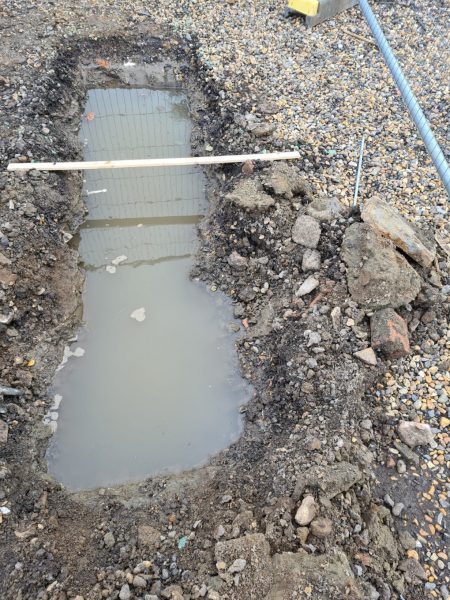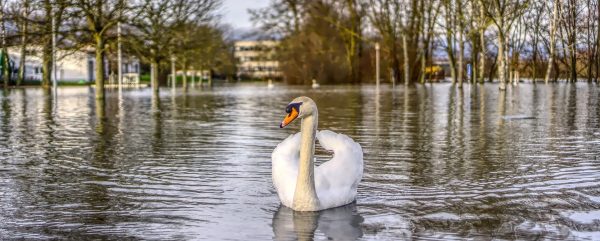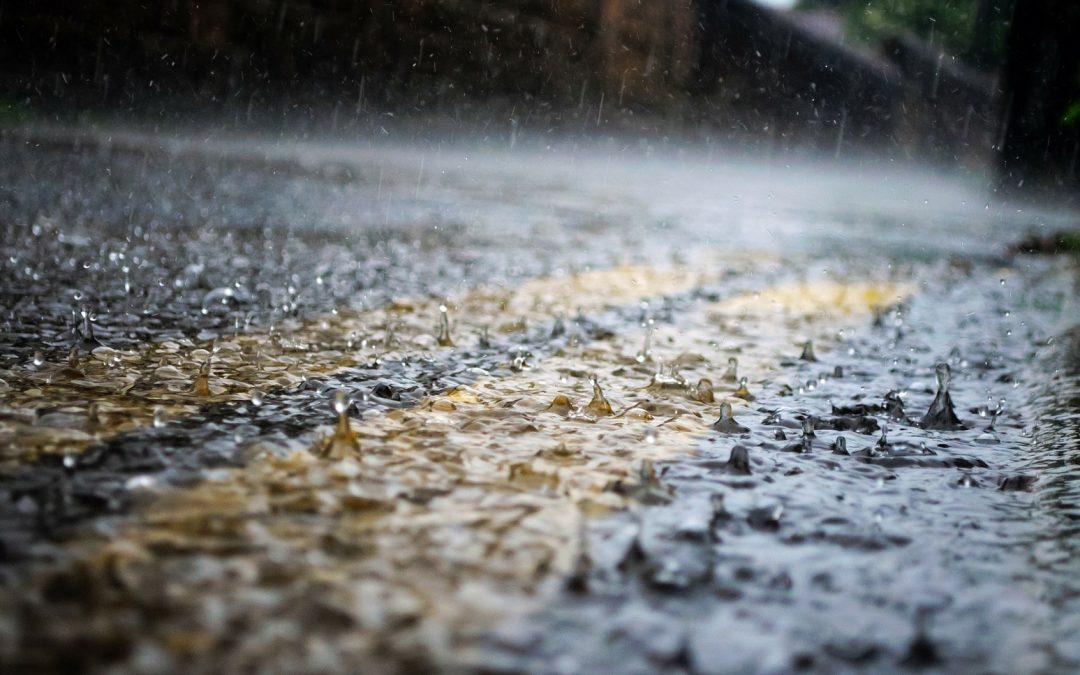Rain, rain, soakaway…!
Geoenvironmental • Geotechnical • Regulation
Councils and other planning authorities will often try to promote the construction of a soakaway to limit the building of new drains that connect into overloaded historic drainage networks. Ground & Water Engineer, Aaron Abu explains that soakaways should not be specified or sited, unless based on proven infiltration testing.
 With the increasing development of rural areas and a subsequent increase in impermeable hardstanding areas; there has been a steady decline in natural drainage over the years. This often leads in some areas to precipitation having a limited area where it can infiltrate into the underlain ground. With nowhere to go, prolonged or torrential rainfall can lead to localised flooding. This is normally counteracted by development of new sewer pathways, but this can place additional pressure on already overloaded, historic, drainage systems. To relieve the strain on the drainage system, councils and other planning authorities will often try to limit the construction of additional sewer systems, preferring to promote the creation of soakaways.
With the increasing development of rural areas and a subsequent increase in impermeable hardstanding areas; there has been a steady decline in natural drainage over the years. This often leads in some areas to precipitation having a limited area where it can infiltrate into the underlain ground. With nowhere to go, prolonged or torrential rainfall can lead to localised flooding. This is normally counteracted by development of new sewer pathways, but this can place additional pressure on already overloaded, historic, drainage systems. To relieve the strain on the drainage system, councils and other planning authorities will often try to limit the construction of additional sewer systems, preferring to promote the creation of soakaways.
Soakaways are a method of drainage, that discharge an amount of collected rainfall, upon a catchment area, into the surrounding soils. They typically come in two forms: shallow perforated chambers, or deep bored liners. Soakaways also act as underground storage and reduce the peak flow into the surrounding soils.
 The construction of soakaways should involve the in-situ testing of the underlain geological strata, to determine their respective infiltration rates. In-situ testing for soakaways involves the excavation of a trial hole of sufficient size, bottomed out into natural soils. The trial holes are then filled with water and the infiltration rates are recorded periodically. Once 75% of the water has infiltrated into the soils, the trial hole is refilled with water and a second test is conducted. Full compliance to BRE Digest 365 requires three consecutive tests to be undertaken within a trial hole for an increase in precision and accurate soakage rates.
The construction of soakaways should involve the in-situ testing of the underlain geological strata, to determine their respective infiltration rates. In-situ testing for soakaways involves the excavation of a trial hole of sufficient size, bottomed out into natural soils. The trial holes are then filled with water and the infiltration rates are recorded periodically. Once 75% of the water has infiltrated into the soils, the trial hole is refilled with water and a second test is conducted. Full compliance to BRE Digest 365 requires three consecutive tests to be undertaken within a trial hole for an increase in precision and accurate soakage rates.
Soakaway testing can be undertaken at any time of year. However, testing should be undertaken in the winter, during worst case conditions, where the groundwater table is noted at higher elevations. Further site variations likely to impact soakage testing are:
- Preferential underground seepage routes – Fractures, fissures and porous soils will often provide a more favourable route for water.
- Soil conditions – Soils with moisture deficit are more likely to record higher infiltration rates in comparison to overly saturated soils.
- Weather variation – Temperature variant, amount of precipitation are all likely to impact the rate of infiltration.
The factors listed above can impact the infiltration rates recorded for the underlain natural soils. Soakage testing undertaken for soils experiencing extended dry periods will often lead to high initial infiltration rates; however, a full compliance with BRE Digest 365 will correct for the skew in the data set. Conversely, an overly saturated soil, with persistent rainfall, is likely to reduce the infiltration rate based on the consistent supplement of rainwater to the trial hole. These values of seepage into naturals soils are considered to be the most conservative results for soakage testing.

Soakaways provide a method for long-term storm water disposal, based on soakage data of the underlain geology and their respective infiltration rates. But as can be seen, numerous factors can affect the infiltration rate of the underlain geology. While the effective use of soakaways can avoid placing more pressure on historic drainage systems already close to maximum capacity; assuming a soakaway is the default solution can lead to problems. Therefore it is important that all extraneous variables are examined and assessed by a qualified geotechnical engineer, to provide realistic infiltration rates, which prove whether a soakaway is the most suitable means of drainage.
Ground & Water provide BRE365 testing services or can review your site with respect to anticipated geology and whether soakaways are likely to work. We also undertake work in West Sussex councils where over winter groundwater monitoring and fully compliant BRE365 tests are required to get a drainage strategy for a development approved.
